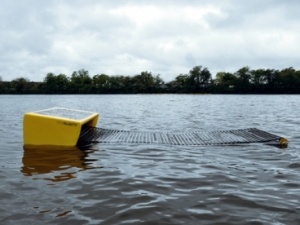Sep 14 2010
Researchers at the Massachusetts Institute of Technology (MIT) have developed an archetypal model of a robot called Seaswarm that can automatically move across the ocean to absorb the oil spill and process it locally.
The first Seaswarm model was launched by MIT’s Senseable City Lab at the Venice Biennale’s Italian Pavilion on August 28 2010. Venice Biennale’s art, music and architecture depicted how nanotechnology can have a profound impact on human lives in 2050.
 Seaswarm robot
Seaswarm robot
The length of the Seaswarm robot is 16 feet and its thickness is seven feet. Its autonomous impulsion across the ocean is enabled by the solar panels, each measuring 2 sqm. The robot can clean oil spills incessantly for weeks together with a power requirement of 100 W.
The oil is collected by the robot with the help of a conveyor belt, which is enveloped by a slender nanowire mesh. This nano fabric was created by Francesco Stellacci, MIT’s Visiting Associate Professor. It was reported that the water resilient fabric can take in oil up to twenty times its own weight. The absorbed oil can be confiscated and burnt onsite by increasing the temperature of the nano material. The fabric employed in Seaswarm can be used again.
Assaf Biderman, Associate Director, Senseable City Lab has stated that by envisaging an object that would travel along the water like a ‘rolling carpet’ and effortlessly absorb the oil spill, they had designed this innovative vehicle which has a trouble-free and lightweight conveyor belt for swaying on the ocean surface effectively amidst waves.